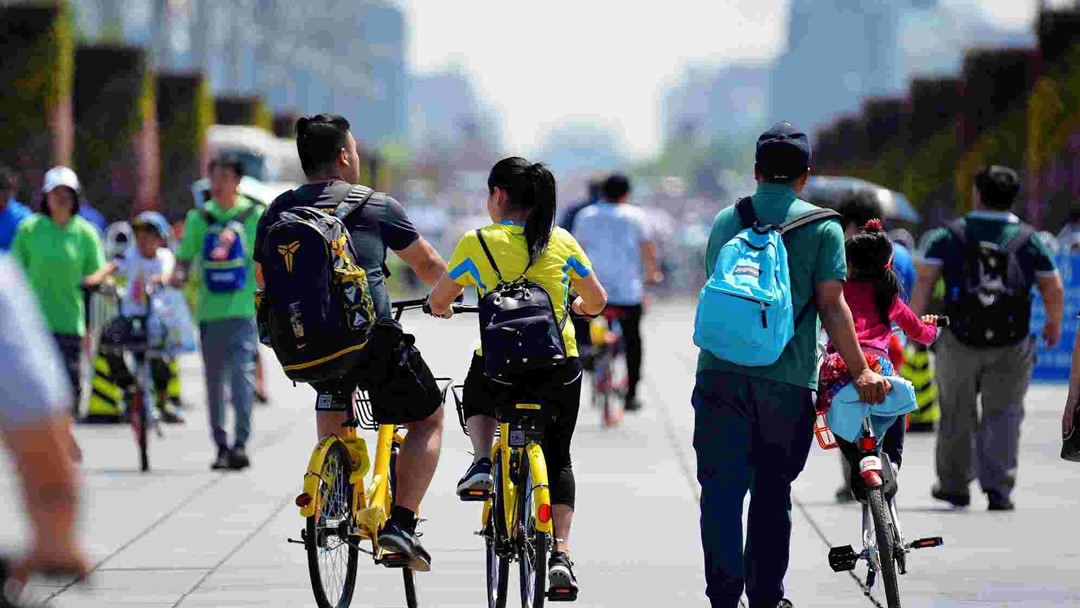By CGTN’s Laura Luo
Beijing is set to become a megapolitan city cluster by 2030 thanks to plans to link the capital with nearby Tianjin and Hebei Province. The plan requires that the cities be built around efficient and low carbon transportation systems.
However, road congestion in Beijing is more than heavy. The average speed on the road is only about 23 km per hour. For each hour of travel, half of that time is wasted waiting. Plus, the existing infrastructure seems unable to ease traffic congestion. So people have turned to smart transportation for solutions.
Beijing’s Sanlitun area is among the worst offenders. It’s a hub for entertainment, shopping, clubs, and football matches, and has gathered many types of transportation – cars, buses, bikes, and tuktuks. But the chaos could be eased by a group of graduates from Tongji University with their smart community plan.

Cars crowding the Sanlitun roads on Christmas Eve, 2016. The area can be even more congested on festivals, when people shop and celebrate. /CFP Photo
The plan separates space into three layers. On the ground, automated driving electric buses. In the air, corridors for pedestrians. And underground, channels for subways and also pipelines for water, sewage, garbage, energy, post and delivery.
Many futuristic public transportation ideas are already in the pipeline, such as a Mercedes Benz self-driving bus, Norway's underwater floating tunnels, Elon Musk's hyperloop or his latest project involving an underground 3D tunnel.
Big data and artificial intelligence are already being used to avoid road congestion, without even touching the existing infrastructure.
Baidu has a thermal map that records the traffic changes over 24 hours in Sanlitun.
“The thermal map sources from 500 million cellphones and receives 72 billion GPS location requests each day. Once we categorize and analyze these data, we will know the density of people in different areas. We can then inform transportation authorities so they can send traffic forces to those locations in time,” said Sunrong Yan, general manager of Baidu Map Smart Transportation.
But the real relief comes after China's sharing economy has taken off. Beijng now has about 200,000 shared bikes on the streets, and they already play a big role in reducing the capital's traffic congestion.

People riding the shared yellow Ofo bikes in Beijing. /CFP Photo
Shared parking has also helped. “Statistics show that 20 percent of traffic jams are caused by people looking for a parking space, or cars parked at wrong places off the streets. At peak hours, the traffic problems around shopping malls in the city center is even worse, and can go up to 50 percent,” said Tina Zhen, co-founder & CMO of Beijing Qtparking Technology, a tech startup aiming to digitalize and share China's parking resources.
Zhen noted that 58 percent of underground parking slots are usually empty, so Qtparking grabs data from these existing parking systems, and transmits the information onto its cloud platform that’s connected to a mobile Internet service, such as WeChat.
“So when drivers want to know if there is an available parking space, they can check the WeChat account and easily pay as you go,” Zhen said.
Beijing continues to expand its portion of green travel - it's expected to reach 72 percent this year. That percentage is still lower than in cities like Paris or Hong Kong, but what's certain is that smart transportation is making a difference.
1km










